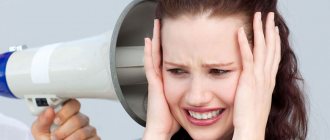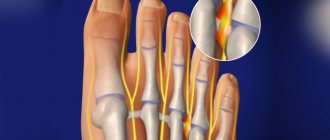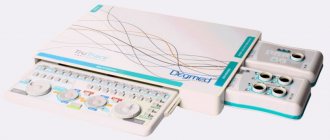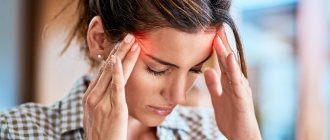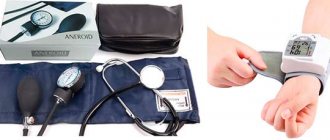Pressing cephalalgia in the temples can occur at any time of the day. This pain is usually of mild or moderate intensity. It does not always indicate the presence of diseases or serious problems, but if it appears systematically, it requires diagnosis. There are many effective ways to deal with unpleasant sensations of a physiological nature. If their use does not give the desired result, you should not resort to taking medications. It is better to visit a neurologist who will determine the causes of the condition and select the necessary treatment regimen. You should not delay your visit to the doctor if there is pressure in your temples and additional alarming symptoms appear.
The mechanism of pain in the temples of any nature
In the temporal areas of the head there is a dense vascular network. Due to the anatomical features of the area, the blood channels are located in close proximity to both the skin and bones of the skull. If for some reason cephalalgia spreads to this area, it is in most cases caused by a circulatory failure, increased blood flow to the tissues, and vasospasm. Even arteritis, in which there is not only pressure in the temples, but also sharp or pulsating sensations, is no exception. It is accompanied by cephalalgia due to irritation of receptors by increased blood pressure.
Temples hurt - what are the reasons?
The triggers for temporal cephalgia are not necessarily in the head. Pressing sensations can occur at the initial stage of a cold, in case of poisoning with toxic fumes or salts of heavy metals. Often the symptom is not pathological, but physiological in origin.
Factors that cause headaches and noticeable pressure on the temples:
- stress – experiences, emotional overload, shock situations lead to vasospasm, hypoxia of the brain matter. Analgesics will not help here; it is better to use relaxation techniques or natural sedatives;
- physical overload – passion for sports creates excessive stress on the blood vessels. Due to the peculiarities of the anatomy, pressing pain first occurs in the temples. Adjusting your training regimen will relieve discomfort;
- alcohol consumption - even in small volumes, alcoholic drinks become a source of toxins and cause changes in the tone of blood channels. Temporal cephalgia can occur both with alcohol abuse and after a single dose;
- smoking is a factor that causes vascular spasm, causing an increase in blood pressure. Heavy smokers not only experience pressure on their temples, but the pain spreads to the entire cranium. If there is no opportunity or desire to give up the habit, you must at least follow the rules of smoking;
- changes in hormonal levels - unpleasant sensations in the temples often bother women during menopause, menopause, pregnancy, menstruation or before them. They are usually mild and easily treatable using traditional medicine;
- change in climatic conditions - a violent reaction to weather changes often indicates reduced functionality of blood vessels. If treatment is not required, it is worth at least doing general strengthening of the body;
- dietary habits - eating fatty or fried foods threatens vascular atherosclerosis. Excessive consumption of salty foods can lead to hypertension. A passion for processed foods, fast food and preservatives leads to the accumulation of chemical additives in the body, to which the brain reacts with a headache in the temples;
- eye strain – prolonged work at the computer or with papers, reading, looking at small details force the eye muscles to overstrain. The result is a decrease in visual acuity, dryness and redness of the mucous membrane, pressing sensations in the temples;
- non-compliance with the daily routine - temporal cephalgia is one of the first and most striking symptoms of lack of sleep or excess sleep. Correcting your routine will quickly relieve discomfort.
When physiological causes can be excluded, it is worth visiting a therapist. The regular occurrence of a symptom is characteristic of a number of pathological conditions that can pose a threat to health. Do not hesitate to visit a doctor if your headache is accompanied by other warning signs.
Hypertonic disease
With a persistent increase in blood pressure, people can experience cephalalgia constantly or suffer from systematic prolonged attacks.
They have a headache in the temple area, and the sensation often moves to the back of the head. Soreness is represented by pressure or distension, which at its peak turns into pulsation. The clinical picture is complemented by facial redness, irritability, dizziness, loss of coordination, and nausea. The danger of the disease is that it negatively affects the condition of the blood vessels and leads to their wear and tear. Hypertension also puts excessive strain on the heart. If left untreated, the disease can provoke a hypertensive crisis, stroke, and multiple organ failure.
Migraine
Neurological pathology is characterized by unilateral headache in the temples, which gradually spreads to the entire half of the skull. From time to time the symptom may change its localization to the opposite, but rarely becomes symmetrical. At the peak of sensations, the pressure turns into pulsation. It is accompanied by nausea - if vomiting occurs, the patient experiences relief. An attack of cephalgia in a quarter of cases is preceded by an aura in the form of unusual visual, olfactory, and tactile sensations. During physical activity, under the influence of smells, sounds, bright light, the discomfort intensifies.
Cardiopsychoneurosis
The cause of this disease has not yet been fully established. Its development is associated with the specifics of the constitution
person. According to statistics, pathology is detected in young people. It is manifested by cephalalgia, decreased temperature of the extremities, spots before the eyes, a lump in the throat and pain in the chest, which is relieved by Nitroglycerin. The headache is pressing, mainly concentrated in the temples.
Most patients diagnosed experience occasional crises. They are characterized by dizziness, bouts of trembling, inexplicable fear, and increased sweating. Such attacks are resolved by loose stools or copious urine output.
Transitory reasons
This group includes passing factors that cause a one-time occurrence of a symptom. They are usually not dangerous, but can cause discomfort. When systematically exposed to the body, such irritants can provoke the appearance of chronic problems. The list includes abuse of coffee or other stimulants, taking medications, fear, uncomfortable headwear, inappropriate hairstyle, and hypothermia of the head. If you try to endure such pain, then under the influence of negative emotions it will only intensify.
Other causes and provoking factors
If a person’s temples hurt and pound, this does not necessarily indicate problems with blood pressure. There are other factors that provoke the appearance of this symptom.
Doctors identify the following causes of pain and pressure in the temples:
- changes in weather conditions, climate, time zone;
- stressful situations and psycho-emotional shocks;
- visual tension;
- long-term uncontrolled use of certain medications;
- chronic lack of sleep;
- severe fatigue;
- sedentary lifestyle, insufficient physical activity;
The cause of pain in the temples can be a disease such as migraine.
In this case, patients experience symptoms such as photophobia, noise intolerance, severe nausea, and increased sensitivity to tastes and aromas. Whiskey pain can also occur due to intoxication - poisoning the body with low-quality food, alcoholic beverages, or consuming large amounts of alcohol. This pathological condition is accompanied by painful sensations localized in the abdominal area, nausea, bouts of vomiting, and stool disorders (diarrhea followed by constipation).
Even a sudden change in diet, for example, when starting diet therapy, can provoke a problem.
Doctors recommend paying attention to the nature and frequency of pain in the temples. If unpleasant symptoms occur occasionally and are quickly relieved with medication, then you should not worry too much. Frequent pain in the temples, accompanied by other signs characteristic of hypertension, is a reason to consult a doctor and undergo a medical examination!
The main causes of pain in the temples
Diagnostic algorithm
At the initial stage of development of many diseases and with physiological causes of temporal headache, the symptom is often the only alarming sign. Based on this, it is difficult to make a diagnosis and choose the right treatment. After collecting anamnesis, a number of steps should be taken to help determine the source of the problems.
If you experience pain in your temples, it is recommended to do the following:
- measure blood pressure - each person has his own “working pressure” at which he feels comfortable. It is important to understand that indicators exceeding these limits are not considered a disease if they are within the boundaries of medical norms. Attempts to correct normal blood pressure readings using pills can lead to serious problems;
- assess the likelihood of external factors influencing the body;
- pass general tests, undergo diagnostic procedures. The list of the latter is established by the doctor. For pressing sensations in the temples, MRI, CT, ultrasound or REG of blood vessels, and EEG are often used.
Based on the research results, the doctor makes a preliminary diagnosis. If necessary, he refers the patient for examination to a neurologist, ophthalmologist, ENT specialist, psychologist, orthopedist or other specialist. After identifying the causes of the headache, a treatment regimen is selected for the patient.
Temples hurt - what to do?
In case of a one-time occurrence of unpleasant sensations of mild or moderate severity, you can try to cope with the problem yourself. Sometimes, to eliminate discomfort, it is enough to take a walk in the fresh air, drink a cup of chamomile tea, massage your temples, or rub a drop of menthol oil into them. If you still have a headache in your temples after this, you can take a tablet of Ibuprofen, Paracetamol or Citramon.
In other cases, the treatment method depends on the causes of cephalgia:
- hypertension - diet, taking antihypertensive drugs, removing excess fluid from the body, restoring vascular patency, improving blood circulation in the brain;
- migraine – pain relief with the help of NSAIDs, analgesics, triptans, ergotamines;
- neurocirculatory dystonia - taking natural sedatives or light tranquilizers in case of their low effectiveness.
- transient causes - elimination of the irritant, pain relief with any available medications.
Once the discomfort has been eliminated, the treatment does not end. It is necessary to select an appropriate method of preventing temporal cephalgia so that attacks do not recur.
Diagnosis and treatment of pathology
To establish an accurate diagnosis, the following procedures are prescribed:
- general and biochemical blood tests;
- EEG (electroencephalogram) to check brain activity;
- x-ray in cases of injury, dropsy;
- coagulogram to check blood clotting;
- MRI (magnetic resonance imaging) to determine the presence of tumors;
- CT (computed tomography) for diagnosing strokes, hemorrhages, inflammatory processes;
- Ultrasound or angiography to detect vascular abnormalities.
Based on the results of the study, individual drug treatment is selected.
Physiotherapy
The main task of physiotherapeutic treatment is to relieve attacks, as well as regulate the functioning of blood vessels.
Popular procedures:
- Circular shower.
- Laser therapy of the cervical-collar area.
- Contrast and carbon dioxide baths.
- Electrophoresis.
- Darsonvalization of the head.
- Combined regimens: magnetic therapy + drug electrophoresis.
All procedures in the required quantity are prescribed strictly by a specialist.
Drug therapy
If you have severe pain in your temples, you can take painkillers on your own at home.
Affordable Over-the-Counter Pain Pills
| Name | Reception scheme |
| Spasmalgon | Take 1-2 capsules to relieve pain, no more than 3 times a day |
| Citramon | Drink 1 tablet. 3-4 times a day |
| Nurofen | Dissolve 1 tablet. Drink the composition maximum 4 times a day |
In any case, what to drink for pain in a specific pathology should be determined by a specialist.
Self-relieving pain attack
To stop isolated attacks, take mild painkillers. You can also use aids:
- massage on certain points;
- take a contrast shower or relax in a warm bath with the addition of herbs or your favorite essential oils;
- apply a cold compress (if the face is red) or hot lotions on the temples (if paleness appears);
- go out into fresh air if there is a lack of oxygen;
- try to sleep in a quiet place.
Folk remedies
Traditional methods proven over the years help a lot. Recipe with valerian root. Grind 20-30 g of valerian root, pour a glass of boiling water. The mixture needs to be kept in a water bath for 15-20 minutes, and allowed to stand for about 40 minutes. The decoction helps with migraine attacks. Take on an empty stomach 2-3 times a day for at least 1 week. Aromatherapy. If pain occurs, massage your temples with lavender or peppermint oil. It is also useful to breathe in essential oils. Recipe with cabbage. Squeeze the cabbage leaves until the juice comes out. Apply to your temples and secure with improvised means.


